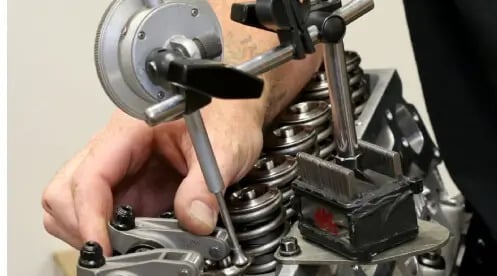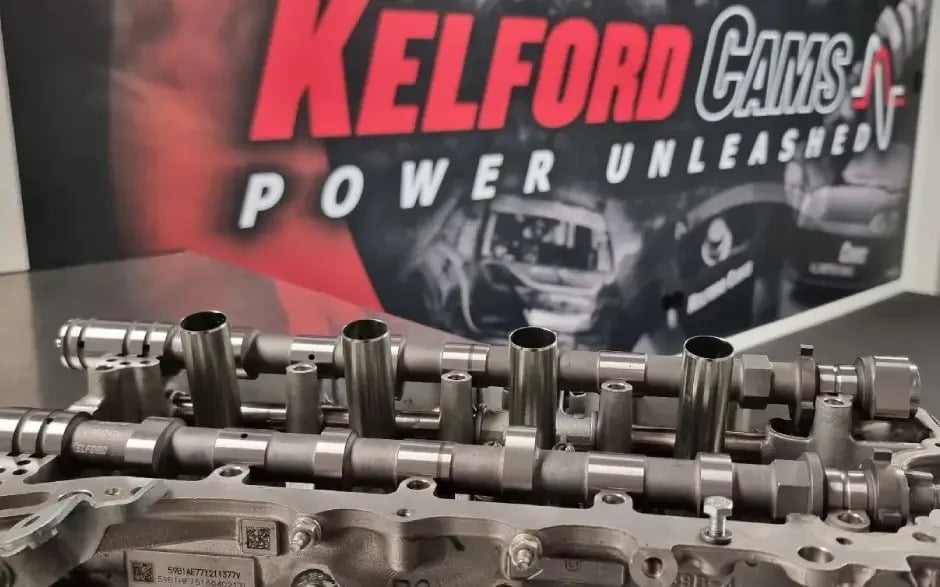Flat Tappet Break In Procedure
PREVENT CAMSHAFT DAMAGE
BY AVOIDING COMMON MISTAKES

To perform the Flat Tappet Camshaft Break-in Procedure correctly, make sure to check the camshaft and other valve train components for compatibility, especially the valve springs. For heavy load spring applications, we advise using lighter load springs or removing the inner spring (in dual spring applications) only for break-in purposes.
Remember, it's crucial to clean every part thoroughly before installing it in an engine. Never assume that the parts come already cleaned before packaging. Always check cam bolts, spring retainers, springs for any damage
Flat Tappet Break In:
The first 20 minutes are crucial for both hydraulic and mechanical flat tappet camshafts. This is when the bottoms of the tappets mate-in with the cam lobes.
However, due to some countries' regulations, some oils today lack the necessary ingredients for break-in. Therefore, it is important to choose your motor oil carefully.
We recommend draining the crankcase and filling it with new, clean oil before installing the camshaft and lifters. You should also change the oil filter at this time.
To properly break-in a flat tappet camshaft, follow these steps: wash the camshaft and lifters thoroughly in clean mineral spirits to remove the rust preventative applied before shipping, then proceed with installation.

Need An Article Copy?
Due to the level of information, we recommend to Download PDF direct to read when you need it.
Installation Procedure:
DO NOT “pump-up” hydraulic lifters before use. This can cause the lifters to hold a valve open during engine cranking, resulting in low compression. The low compression will delay engine start up and is very detrimental to proper camshaft “break-in”. With the supplied moly paste lube, coat the bottom of the lifters, cam lobes and distributor gear.
- Set your valve lash or lifter preload. Try to minimize the number of times that you rotate the engine, as this can displace the moly paste from the lobes and lifters.
If possible prime the oiling system. When priming, rotate the engine at least one complete revolution to assure oil gets to all valve train components.
- Valve covers should be off to assure that all rockers are oiling.
Preset the ignition timing to start the engine at a fast idle. It is important that the static ignition timing is as close as possible and if the engine has a carburetor, it should be filled with fuel.
- The engine needs to start quickly without excessive cranking to insure immediate lubrication to the cam lobes.
Start the engine and immediately bring to 2,500 rpm. Timing should be adjusted, as closely as possible, to reduce excessive heat or load during break-in. Get the engine running fairly smoothly and vary the engine speed from 1500-3000 RPM in a slow acceleration / deceleration cycle. During this time, be sure to check for any leaks and check out any unusual noises. If something doesn’t sound right, shut the engine off and check out the source of the noise.
Upon restart, resume the high idle speed cycling. Continue the varying “break-in” speed for 20 – 30 minutes. This is necessary to provide proper lifter rotation to properly mate each lifter to its lobe. Should the engine need to be shut down for any reason, upon re-start it should be immediately brought back to 3000 rpm and the break-in continued for a total run time of 20 – 30 minutes.
Let the engine cool, and then drain the crankcase and properly dispose of the oil and oil filter. Refill the crankcase with premium oil. At this point the initial “break in” is complete. You can drive the vehicle in your normal manner.
We recommend changing the oil and filter after 1,000 kms.
Additional Information
Spring Pressures: For extended camshaft life, flat-tappet cams should not be run with more than the recommended open valve spring pressure. Racing applications will often need to run more spring pressure at the expense of reduced camshaft life.
In order to “break-in” a camshaft with high open pressures, the inner springs should be removed to reduce “break-in” load. The inner springs can then be reinstalled after initial “break-in” is complete.
Lifter Rotation: Flat tappet cams (both hydraulic and mechanical) have the lobes ground on a slight taper and the lifter appears to sit offset from the lobe centerline. This will induce a rotation of the lifter on the lobe. This rotation draws oil to the mating surface between the lifter and the lobe. If it is possible to view the pushrods during “break-in”, they should be spinning as an indication that the lifter is spinning. If you don t see a pushrod spinning, immediately stop the engine and find the cause On flat tappet cams, the lobes and lifter bottoms mate together and if the lifters are removed from the engine, they must go back on the same lobe from which they were removed.
Kelford Cams recommends the use of high quality tappets to prevent premature cam or lifter wear. This is the reason that we prefer to sell you a cam and lifter kit, this way you know that you are buying a ‘matched set’ and risk of failure during break in is greatly reduced.






